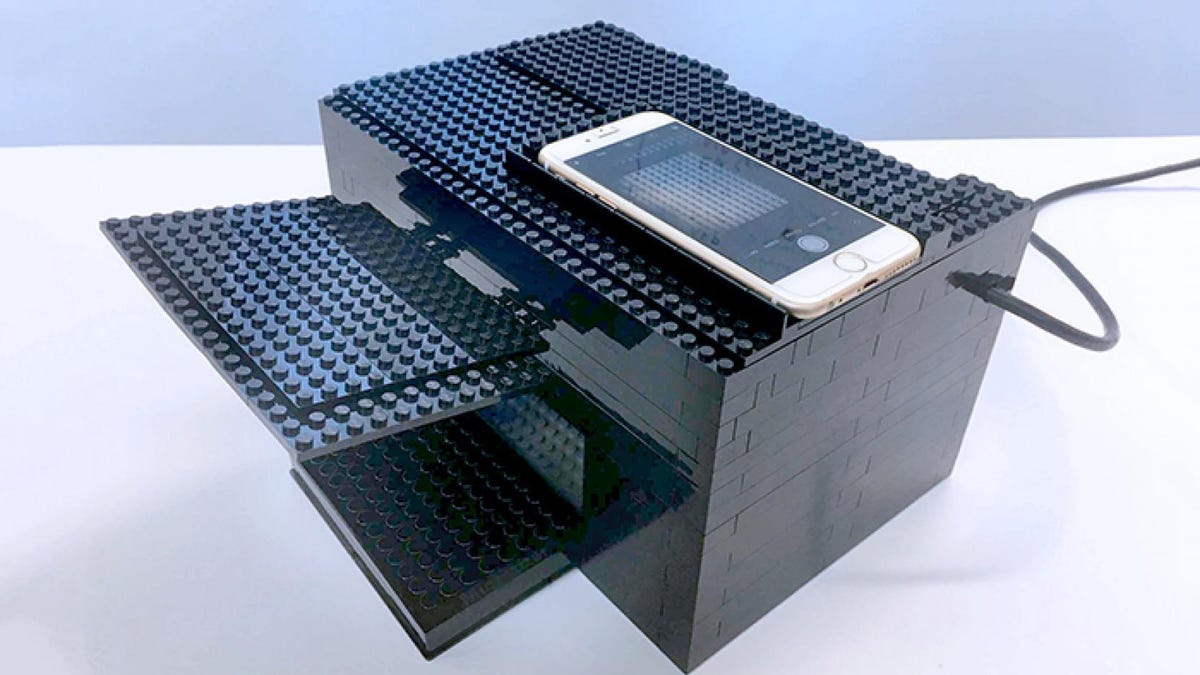Lego and iPhone connect for low-cost nerve gas detector
A portable Lego box rigged with a smartphone can detect deadly nerve agents like sarin and VX.
Sarin nerve gas is one of the most frightening chemical weapons ever created. The odorless gas can kill within minutes.
Researchers at the University of Texas at Austin have come up with a simple way to detect and identify nerve agents like sarin and VX, a substance implicated in the death of North Korean dictator Kim Jong Un's half-brother in 2017.
The sample plate sits in front of the gas detection device.
The researchers' system uses some surprising off-the-shelf components, including Lego bricks and an iPhone . At its heart is a chemical sensor that changes colors and brightness to indicate which nerve agents are present and how concentrated they are.
"Unfortunately, it can be difficult to see differences in the level of florescence with the naked eye in the field. And instruments used in the lab to measure florescence are not portable and cost $30,000," said Xiaolong Sun, the developer of the sensors.
The solution is to use a smartphone to photograph and analyze the sensor's results. The researchers used software created by University of Texas graduate student Alexander Boulgakov. The software is freely available on GitHub and can be adapted for other operating systems. For testing, the team used an iPhone.
The box helps the smartphone get a good reading of the sensor. The researchers considered 3D-printing the light-tight box, but decided Lego components would be less expensive and easier to obtain. The rest of the device consists of a ultraviolet light and a standard sample-collection plate.
The team published a paper on its creation in the ACS Central Science journal this week, concluding that its system could have "broad real-world field applications."
"Chemical weapons are dangerous threats to humanity," said chemistry professor Eric Anslyn. "Detection and neutralization are key to saving lives." A low-cost, portable system like this one could help first responders quickly learn what they're dealing with and take the proper actions to neutralize the gas and treat its victims.
Fight the Power: Take a look at who's transforming the way we think about energy.
'Hello, humans': Google's Duplex could make Assistant the most lifelike AI yet.


